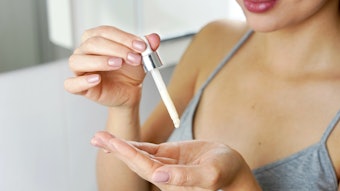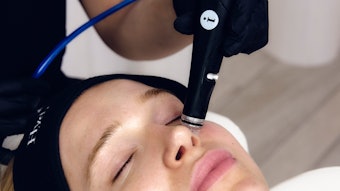Japanese firms are gaining ground on Western multinationals in the top 10 rankings, according to Euromonitor International's latest research. Japan's Kao became a top-ranked player in global personal care in 2006, knocking German-based Henkel out of tenth place with a market share of nearly 3%.
The thrust behind Kao's one percentage point rise was its purchase of Kanebo Cosmetics, a fellow Japanese firm, in a US$3.5 billion deal signed in December 2005. Kao joins Shiseido as the only other non-Western company in the global top 10 rankings, and Euromonitor International sees the two Japanese firms as having strong prospects for growth.
In their domestic market, the world's second largest for cosmetics and toiletries, economic recovery and a generally robust spending profile saw sales of beauty products rise almost 3% in 2006, a growth rate that is predicted to hold through to 2010. Both companies are also pushing into overseas markets, China being a particular focus, thus giving them access to more dynamic demand. Western multinationals are also seeing stronger competition from players in emerging markets, with Brazil's Natura Cosméticos, in particular, fast ascending the global company rankings. The direct seller now comes in at 16th place, up from 22nd in 2005. This is primarily due to the staggering growth in its home market, in which it is the leading supplier. However, the company is working towards developing a broader global reach.
Other players in emerging markets that are expected to make the transition to the global marketplace include Russia's Kalina and Faberlic. At the same time, Western multinationals have not been idle in their attempts to build on their global share. Johnson & Johnson was the biggest mover of the top 10 players, after Kao, and like Kao, its nearly 3% share increase was predominantly due to acquisitions. The US cosmetics company bought both Laboratoire Vendome and Pfizer's consumer healthcare unit in 2006, giving it access to brands including top oral care label Listerine.
The thrust behind Kao's one percentage point rise was its purchase of Kanebo Cosmetics, a fellow Japanese firm, in a US$3.5 billion deal signed in December 2005. Kao joins Shiseido as the only other non-Western company in the global top 10 rankings, and Euromonitor International sees the two Japanese firms as having strong prospects for growth.
In their domestic market, the world's second largest for cosmetics and toiletries, economic recovery and a generally robust spending profile saw sales of beauty products rise almost 3% in 2006, a growth rate that is predicted to hold through to 2010. Both companies are also pushing into overseas markets, China being a particular focus, thus giving them access to more dynamic demand. Western multinationals are also seeing stronger competition from players in emerging markets, with Brazil's Natura Cosméticos, in particular, fast ascending the global company rankings. The direct seller now comes in at 16th place, up from 22nd in 2005. This is primarily due to the staggering growth in its home market, in which it is the leading supplier. However, the company is working towards developing a broader global reach.
Other players in emerging markets that are expected to make the transition to the global marketplace include Russia's Kalina and Faberlic. At the same time, Western multinationals have not been idle in their attempts to build on their global share. Johnson & Johnson was the biggest mover of the top 10 players, after Kao, and like Kao, its nearly 3% share increase was predominantly due to acquisitions. The US cosmetics company bought both Laboratoire Vendome and Pfizer's consumer healthcare unit in 2006, giving it access to brands including top oral care label Listerine.










